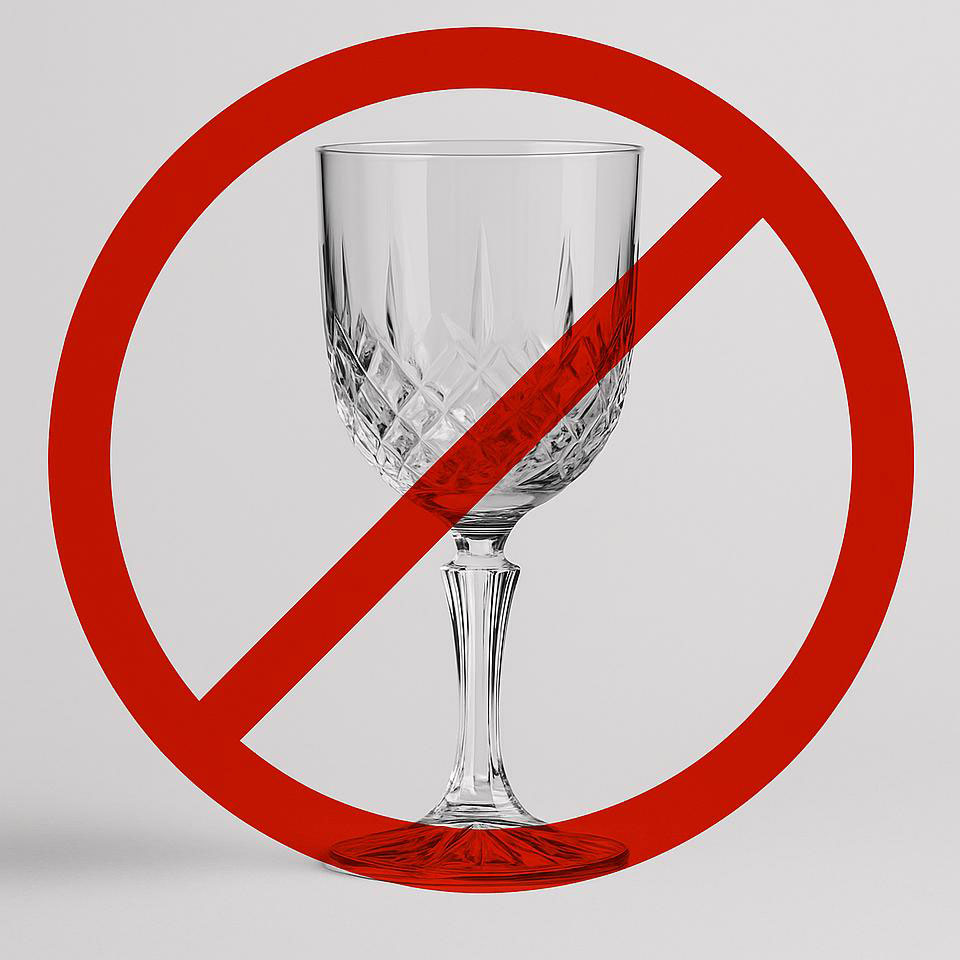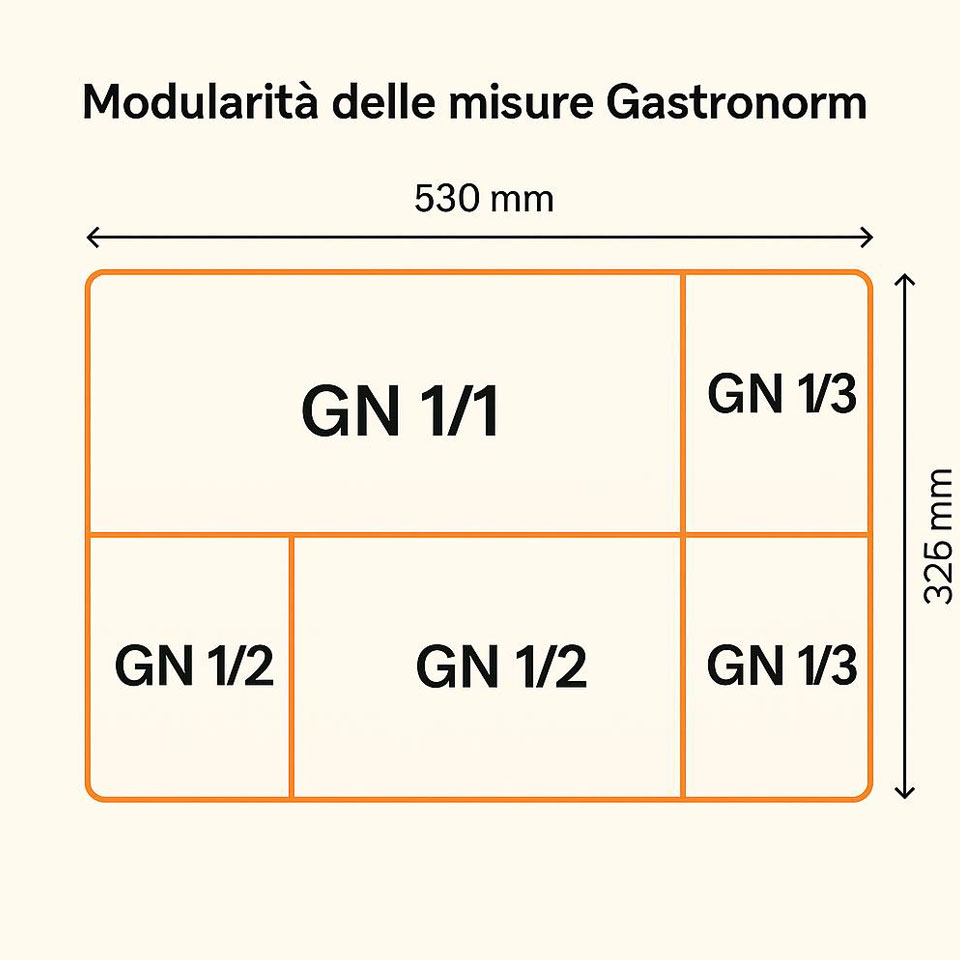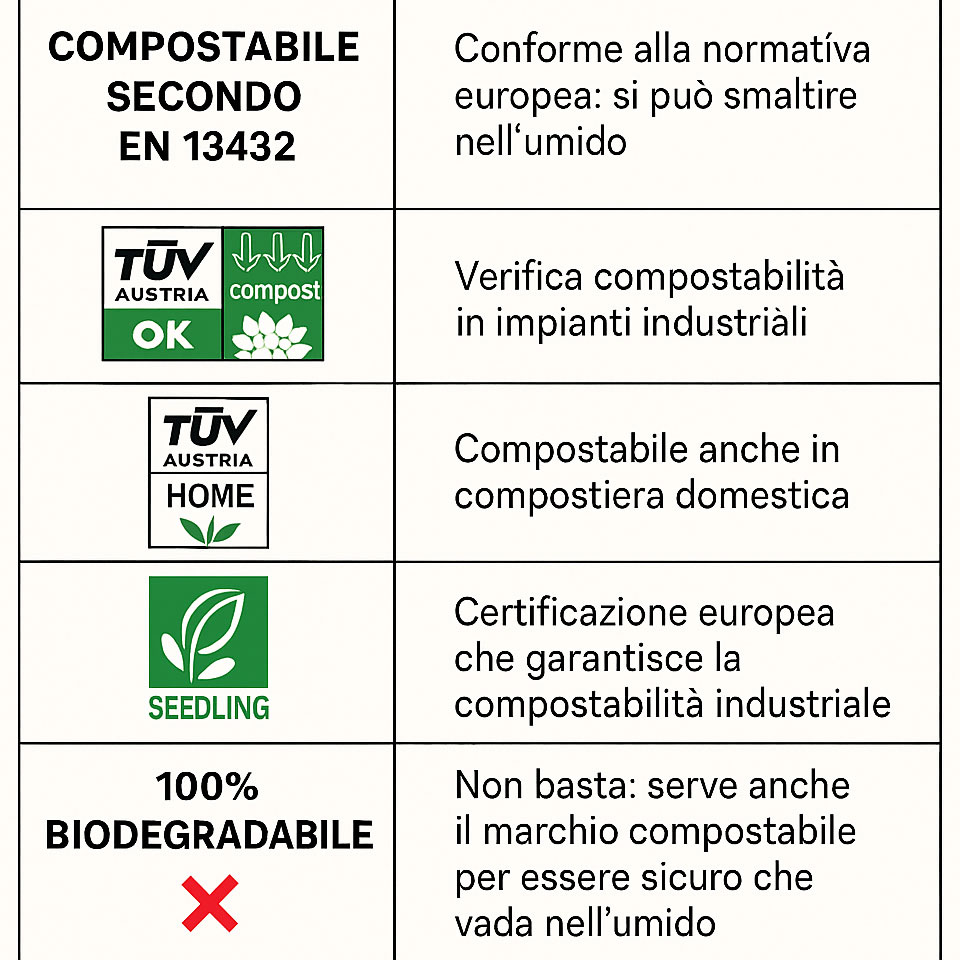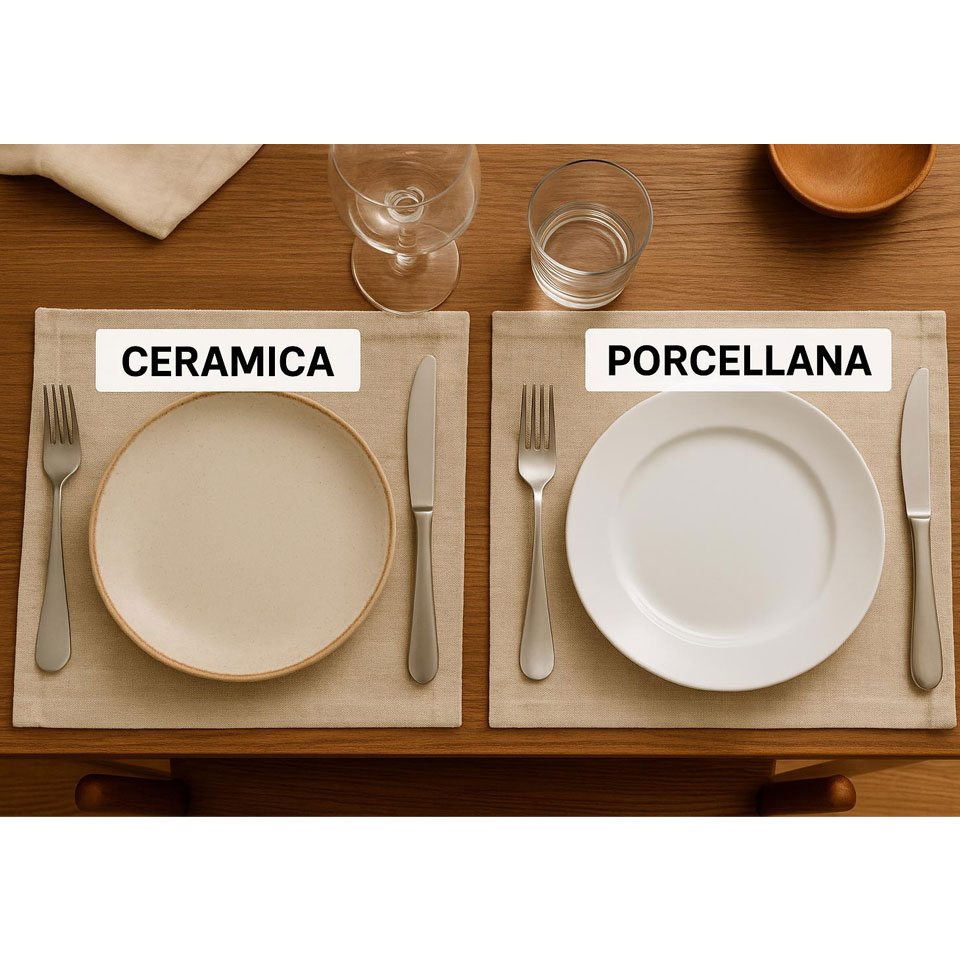After devoting ourselves in the last period to specific products and the seasonality of certain trends, today we of the editorial staff of RGLife are proposing a topic that we hope will be useful to as many professionals as possible: 7 things you may not know about some of the materials and products that you use daily (or almost daily) in your venue.

1. CRYSTAL, IN GLASSES, NO LONGER EXISTS
Put your heart in your mouth: crystal-specifically lead crystal, that glass that contains lead oxide to increase its brilliance and weight-in the glasses is no longer manufacturable.
Over the years, the European Union has introduced several regulations to restrict the use of hazardous substances, including lead, because of its toxicity. These laws do not ban crystal per se, but they regulate:
- the amount of lead that can be contained in products intended for food or children's use;
- the labeling of products containing lead;
- the marketing in EU countries of items that exceed certain limits.
Legislation affecting food (EC Regulation No. 1935/2004) imposes strict restrictions on the use of lead in items such as glasses, jugs and plates. For this reason, the use of lead crystal has been phased out or replaced with lead-free alternatives.
Important: There is no law that has completely abolished the production of lead crystal, but there are strict restrictions that limit its use and marketing.
Highlights on lead crystal:
- Traditionally, "crystal" contains at least 24% lead oxide (PbO).
- Lead is toxic and can migrate into food or drink, especially with acidic liquids.
- The EU has imposed limits on lead migration from glass/crystal items.
The abandonment of lead crystal has enabled the adoption of more environmentally friendly alternatives, the characteristics of which we now compare.
| Feature | Leaded Crystal | Environmentally friendly/lead-free crystal |
| Composition | Contains ≥24% lead oxide (PbO) | Uses alternative oxides: barium, zinc, potassium, titanium |
| Brilliance | Very high | High (but slightly lower) |
| Weight | Heavier | Lighter |
| Sound resonance | Crystalline "tinny" sound | Similar, but less pronounced |
| Workability | Very easy to cut and carve | Good, requires more advanced techniques |
| Food safety | Risks of lead release | Safe for food use |
| EU regulations | Severely restricted | Allowed without special restrictions |
| Environmental impact | Negative (lead=toxic heavy metal) | Minor impact, often 100% recyclable |
| Modern use | For collectibles, traditional luxury | Preferred by sustainable companies |
Examples of known alternatives to lead crystal:
- RCR Cristalleria Italiana (Italy): with the patented Luxion® material, brilliant, transparent, 100% recyclable and lead-free.
- Zalto(Austria): mouth-blown glasses made of lead-free crystal.
- Luigi Bormioli (Italy): SON.hyx® sound glass, brilliant, durable, lead-free.
- Nachtmann(Germany - Riedel Group): lead-free crystal with environmentally friendly formulation.
- Nude(Turkey): mouth-blown, lead-free crystal.
- Rona(Slovakia): eco-friendly sound glass, similar to classic crystal.
- Spiegelau (Germany - Riedel Group): geared toward professional tasting.
2. NAPKIN MEASUREMENTS: UNDERSTAND THEM AND CHOOSE ACCORDINGLY
When buying online, the measurements of the napkins always refer to the open format. Example: "napkin 40×40 cm" = open 40×40 cm, folded (into 4) = 20×20 cm.
Standard measurements (when open):
| Use | Measure (cm) | Notes |
| Cocktail/Finger Food | 20×20 | In paper, for appetizers and drinks |
| Breakfast/Merenda | 25×25 | Paper or lightweight fabric |
| Casual lunch | 30×30 | Daily use |
| Formal lunch/dinner | 40×40 | Made of fabric, for elegant occasions |
| Elegant Dinner/Restaurant | 45-50×50 | For scenic folding |
| High Dining/Gala | 50-60×60 | Large, used in luxury hotels |
3. CERAMICS ≠ PORCELAIN
Both ceramics and porcelain are ceramic materials, but with important differences. Here is a summary table:
| Feature | Ceramic | Porcelain |
| Composition | Common clay + minerals | Kaolin, feldspar, quartz |
| Appearance | Opaque or porous | Smooth and translucent |
| Color | Beige, terracotta | Pure white or bluish |
| Weight | Heavier | Lighter |
| Porosity | High | Almost none |
| Resistance | Good but splintable | Compact and durable |
| Baking | 900-1.100 °C | 1.200-1.450 °C |
| Use | Rustic, artisan | Elegant, high-end catering |
| Price | Cheaper | More expensive |
Other useful ceramic materials:
Stoneware
- Composition: clay with sand
- Appearance: matte/glossy, gray or brown
- Resistance: very sturdy
- Use: daily dishes, tiles, vases
- Firing: 1,100-1,200 °C
Bone China
- Composition: kaolin + animal bone + feldspar
- Appearance: white, fine, translucent
- Strength: high but brittle
- Use: tea sets or elegant dishes
- Firing: 1,200-1,400 °C
Comparison:
| Feature | Stoneware | Bone China |
| Composition | Clay+minerals | Kaolin+animal bone |
| Appearance | Grey/brown | White, glossy |
| Resistance | Very strong | Gentle but durable |
| Weight | Medium | Lightweight |
| Use | Daily | High catering |
| Price | Cheap | More expensive |
4. SINGLE-USE PLASTIC IS RECYCLABLE: HOW TO DISPOSE OF IT PROPERLY
Plastics, although often criticized for their environmental impact, have some significant recycling advantages, especially if handled properly.
Advantages of recycling single-use plastic:
- Lightweight and easy to transport
- Mechanical and chemical recycling:
- Mechanical recycling involves shredding, melting and reforming plastics. It is inexpensive and widespread.
- Chemical recycling breaks down plastic into its basic components (monomers), allowing the creation of new plastic almost identical to virgin plastic.
- Reuse in a wide range of products.
- Reduced consumption of virgin resources: recycling reduces the need to extract oil or natural gas.
- Lower CO₂ emissions: compared to producing plastics from virgin sources.
- Innovation in materials: development of more easily recyclable plastics (monomaterial, compostable).
- Pollution reduction: less plastic in landfills, seas and rivers = less microplastics in natural systems.
Concrete example: Recycling 1 ton of PET plastic saves about 3 tons of CO₂ and up to 70% energy compared to production from virgin material.
Economic and social benefits:
- Waste valorization: recycled plastic becomes second raw material.
- Savings in production costs.
- Job creation
- Development of the circular economy
Boost to innovation: new recycling technologies (chemical, enzymatic) increase the range of recoverable plastics.
5. NONSTICK COATING IS NOT HARMFUL TO HEALTH
Nonstick coating on pans is safe, as long as a few simple rules are followed.
Most common material: PTFE (polytetrafluoroethylene), known as Teflon. It is chemically inert and stable up to about 260-280 °C. Above 300 °C it can deteriorate.
Other nonstick materials:
- Nonstick ceramic: smooth surface, derived from silica, without PTFE.
- Titanium or mineral coatings: combine metal and hard surfaces, often PTFE-free.
PFOA: has not been used in Teflon production for over a decade. Modern coatings are generally "PFOA-free."
Care and maintenance:
- Wash by hand with soft sponge.
- Wait for pan to cool before washing.
- Avoid metal utensils; use wood, plastic or silicone.
- Do not use abrasive sponges or straws.
- Do not vacuum heat.
When to replace the pan?
- Scratched or peeling coating.
- Food sticks easily
- Uncovered staples or deep discoloration

6. GASTRONORM SIZES ARE UNIVERSAL
Gastronorm (GN) sizes are an international standard for professional kitchen containers, compatible with ovens, refrigerators, displays, etc.
Basic standard: GN 1/1 = 530 × 325 mm All other sizes are modular fractions (e.g., GN 1/2, GN 1/3...) compatible with each other. Depths vary (20-200 mm) and affect capacity.
Advantages of the GN system:
- Modularity (e.g., 2 × GN 1/2 = 1 × GN 1/1)
- Space efficiency (ovens, refrigerators, carts...)
- Saves time and order in the professional kitchen
- Standardization = safety in purchasing
Uses:
- Preparation and portioning
- Cooking (in professional ovens)
- Storage (refrigerator/freezer with dedicated lids)
- Serving (hot/cold buffets, bain-marie, displays)
Available materials:
- Stainless steel: durable, hygienic, suitable for baking
- Polycarbonate: transparent, ideal for refrigeration
- Polypropylene: lightweight, economical
- Melamine or ceramic: elegant for buffets (not for baking)
7. BIODEGRADABLE ≠ COMPOSTABLE: WATCH OUT FOR LABELS
Biodegradable is not equivalent to compostable, so watch out for labels.
Biodegradable: decomposes in nature, but timing and conditions are not guaranteed. It does not always go in the compostable.
Compostable: decomposes within 90 days in industrial facilities, with no toxic residues. Produces useful compost for soil.
All compostables are biodegradable, but not all biodegradables are compostable.
What to look for on labels:
| Label | Meaning |
| "Compostable according to EN 13432." | Complies with European regulations, goes in the wet waste bin |
| OK Compost logo (TÜV Austria) | Compostable in industrial plants |
| OK Compost HOME | Compostable even at home |
| Seedling (🌱) | European certification of compostability |
| "100% biodegradable" | Warning: not enough for wet waste |
| PLA, CPLA, Mater-Bi | Compostable bioplastics (if certified) |
| Stylized Carrot (CIC) | Compostable material in Italy |
Warning:
- Vague labels ("eco-friendly," "green") mean nothing without certifications
- Beige/brown color does not guarantee compostability
- Biodegradable plastic without certification goes in the trash
Where to throw what:
- Certified compostable → Organic collection
- Biodegradable only (without certification) → Undifferentiated


